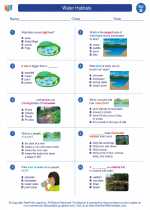Immune System
The immune system is a complex network of cells, tissues, and organs that work together to defend the body against harmful pathogens, such as bacteria, viruses, and other foreign substances. It is crucial for maintaining overall health and well-being.
Components of the Immune System
The immune system is comprised of two main types of immunity: innate immunity and adaptive immunity.
- Innate Immunity: This is the body's first line of defense against pathogens. It includes physical barriers like the skin, as well as non-specific immune responses such as inflammation and phagocytosis by white blood cells.
- Adaptive Immunity: This is a more specialized and targeted immune response that develops over time. It involves the production of antibodies and the activation of specific immune cells to target and eliminate pathogens.
Key Components of the Immune System
The immune system includes several key components:
- White Blood Cells: These cells, including neutrophils, macrophages, and lymphocytes, play a crucial role in identifying and destroying pathogens.
- Antibodies: These proteins are produced by the immune system in response to specific antigens (foreign substances). They help to neutralize and eliminate pathogens from the body.
- Lymphatic System: This network of tissues and organs, including the thymus, spleen, and lymph nodes, is responsible for producing and storing immune cells and filtering out harmful substances.
- Complement System: This group of proteins works with antibodies to enhance the immune response and help eliminate pathogens.
Study Guide
To understand the immune system, it's important to study the following key concepts and topics:
- Overview of the immune system and its functions
- Differences between innate and adaptive immunity
- Roles of white blood cells in the immune response
- Production and functions of antibodies
- Structure and functions of the lymphatic system
- Interactions between the immune system and other body systems, such as the circulatory and respiratory systems
- Common diseases and disorders of the immune system, such as autoimmune diseases and immunodeficiency disorders
- Ways to support and maintain a healthy immune system through nutrition, exercise, and lifestyle choices
Understanding the immune system is essential for maintaining good health and preventing illness. By studying the components and functions of the immune system, you can gain a deeper appreciation for the body's remarkable ability to defend itself against pathogens.
[Immune System] Related Worksheets and Study Guides:
.◂Science Worksheets and Study Guides Second Grade. Water Habitats

 Activity Lesson
Activity Lesson
 Worksheet/Answer key
Worksheet/Answer key
 Worksheet/Answer key
Worksheet/Answer key
 Worksheet/Answer key
Worksheet/Answer key
 Worksheet/Answer key
Worksheet/Answer key
 Vocabulary/Answer key
Vocabulary/Answer key
 Vocabulary/Answer key
Vocabulary/Answer key
